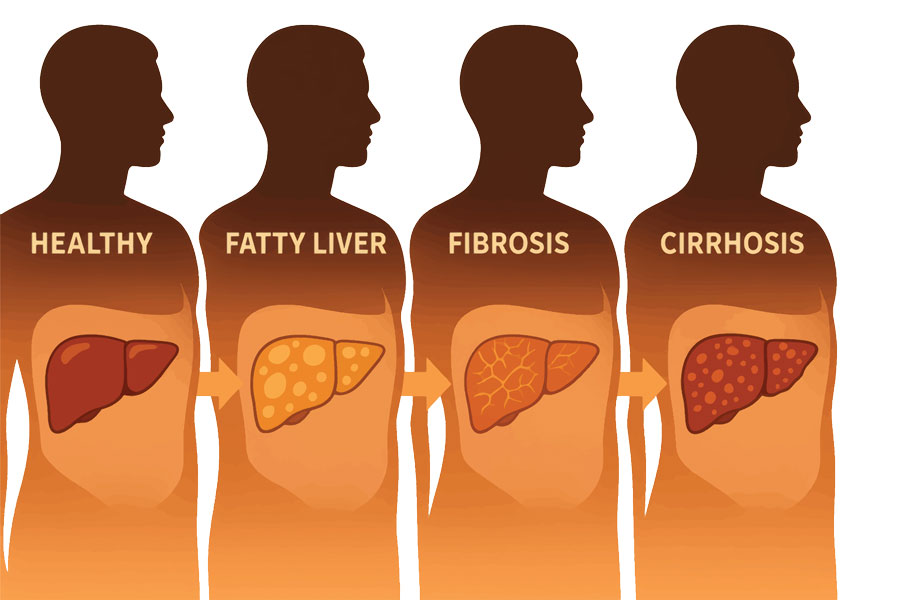October is Liver Awareness Month, a dedicated time to spotlight the importance of liver health and address the growing concerns surrounding liver diseases. As healthcare providers, we play a critical role in not only diagnosing liver conditions but also in advocating for prevention and early detection. The liver, a vital organ that processes nutrients, detoxifies harmful substances, and supports digestion, is often overlooked until disease has progressed to more severe stages.
This month serves as an important reminder of the prevalence of liver diseases and the need for a more proactive approach to liver health in clinical settings.
Liver Health & Obesity: Watch the Video
Liver diseases are becoming increasingly common, yet many are preventable with early intervention and lifestyle modifications. Key liver conditions include:
Non-alcoholic fatty liver disease (NAFLD): The most common chronic liver disease in the Western world, often associated with obesity, diabetes, and metabolic syndrome.
Hepatitis B and C: Chronic viral infections that can lead to cirrhosis and liver cancer if untreated. Despite vaccines for Hepatitis B, global rates of chronic infection remain high.
Cirrhosis: Often a result of long-term liver damage from alcohol abuse, viral hepatitis, or NAFLD, cirrhosis can be asymptomatic until its later stages, making early detection crucial.
Liver cancer: Liver cancer rates are on the rise, particularly in individuals with cirrhosis or chronic viral hepatitis.

As physicians, we know that early detection is key to improving patient outcomes. Yet, many liver conditions can remain asymptomatic for years, and individuals may not seek medical help until they experience advanced symptoms. Here are a few strategies to consider:
Screening for High-Risk Populations: Routine screening for hepatitis B and C, especially in high-risk populations (e.g., individuals with a history of intravenous drug use, immigrants from endemic areas, or individuals with HIV) is essential. Early treatment of viral hepatitis can significantly reduce the risk of cirrhosis and liver cancer.
Monitoring for NAFLD: With the increasing rates of obesity, diabetes, and metabolic syndrome, NAFLD has become a major concern in primary care. Regular liver function tests, imaging (such as ultrasound), and screening for comorbidities like diabetes and hypertension can help catch the disease before it progresses to more serious stages.
Alcohol Use Assessment: Liver disease related to alcohol consumption remains a significant issue. Implementing routine screening for alcohol use and offering interventions for individuals at risk can prevent liver damage.
Liver Health Education: Providing educational resources to patients about the risks of liver diseases, including proper nutrition, weight management, and the importance of avoiding excessive alcohol use, can have a lasting impact on liver health in the community.
This October, consider incorporating these strategies into your practice to improve liver health:
Patient Education: Share information with patients about liver diseases, risk factors, and preventive measures. Use tools like pamphlets, posters, or even social media to reach a wider audience.
Screening Protocols: Review your screening protocols for hepatitis, NAFLD, and liver cancer, and ensure your patients who are at risk are being monitored regularly.
Referrals: For patients diagnosed with liver conditions, timely referrals to hepatologists or gastroenterologists can improve outcomes and prevent complications.
Collaborative Care: Work with dietitians, endocrinologists, and mental health professionals to provide holistic care, especially for patients with metabolic conditions or alcohol use disorders.
Liver diseases often don’t present symptoms until it’s too late. By focusing on prevention, early detection, and patient education, we can reduce the burden of liver disease on our healthcare systems and improve the lives of our patients. As clinicians, we have the power to detect early signs, educate our patients, and guide them toward healthier lifestyles that protect the liver.
Let’s make the most of Liver Awareness Month and continue to raise awareness, advocate for liver health, and make a difference in the lives of those at risk.
Join the Campaign: Participate in Liver Awareness Month by sharing information with your patients, colleagues, and community.
Stay Updated: Sign up for liver health webinars, workshops, or conferences to keep up with the latest research and guidelines in hepatology.
Collaborate for Better Outcomes: Work with multidisciplinary teams to create comprehensive care plans for patients with liver disease.